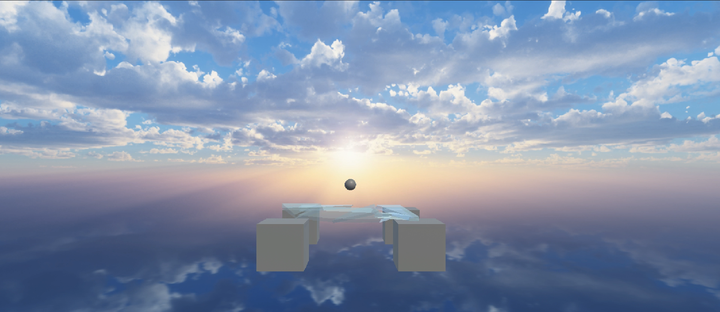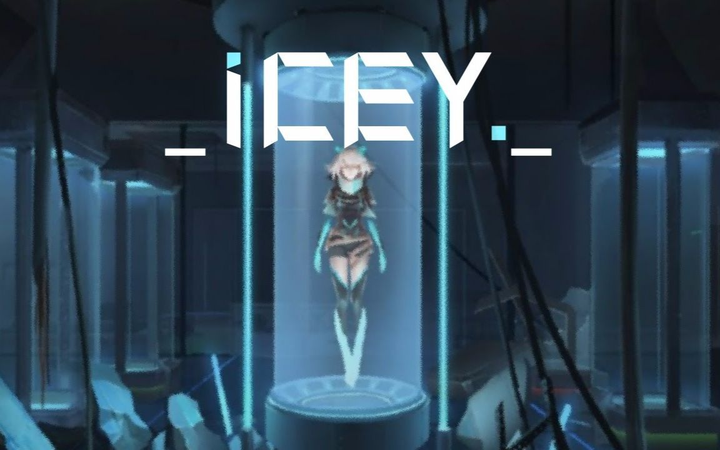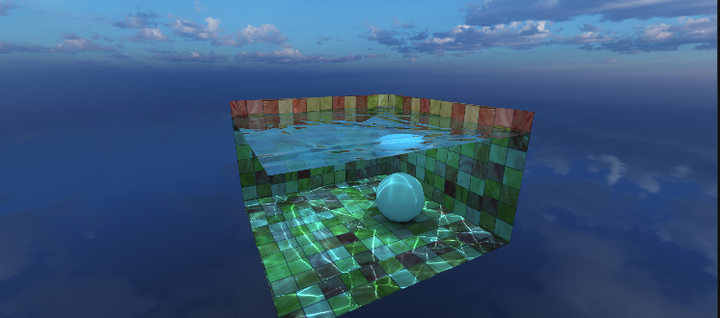Paper Fantacy
I personally believe that games are the ninth art, with the goal of creating works that can move people’s hearts. During my undergraduate studies, I self-taught Unity game production, real-time rendering, physics simulation, character animation, game engines, and had the privilege of interning at Baitian Baiao’s client and Tencent Tianmei’s engine. On the occasion of graduation, in order to summarize what I have learned and explore my own abilities, I chose independent games as my graduation project.
Creation background
About types
In junior high school, I often played various games with my classmates in the information class computer room. For a while, I was attracted by the Flash page game Sliver Lancer and was struggling with the lack of online mode. At that time, I made a great wish to create a shooting battle game on my own with the ability to actively follow up on the needs of players. Now that I finally have the corresponding ability and enough time, I have directly chosen the gameplay type of shooting battles to start fulfilling my childhood dreams (although, due to the limitations of the art materials, related products are closer to Arrow.io and fanta shooting).
About Art Style
Looking back on the child time when we players and creators discussed and co created games in a notebook, drawing maps, recording data… Of course, and watch out for teachers. Unfortunately, the current hardware is far ahead of the time, but there is not enough free time and the highest configuration of the game - friends. Perhaps out of nostalgia, I have set the visual style as graffiti on paper and added some co creative elements during the game guidance, hoping to recreate some of the scenes at that time to commemorate.
About Meta
Of course, there are also some Meta elements in the Challenge mode as Easter egg, and the author personally likes the expression of Meta. The most classic example is undoubtedly Undertale, where the author questions the convention in games where monsters are used to defeat to gain experience (EXP) and level up (LV). At the end of the story, we will reinterpret EXP (Execution Points, Quantifying the Way You Cause Pain to Others) and LV (Level of Violence, Measuring a Person’s Ability to Hurt Others) through Sans, and make judgments based on the your LV , attempting to prevent you from continuing to kill. I hope some players can smile when they get the point.。
Game design
Comic design
The game is imported from a comic: Another boring lesson starts, your sucker deskmate pats you, let’s play the tense and exciting paper game. You were dragged in without any choice. Facing with a completely blank notebook, you quickly determine the type of shooting battle. Then the prototype was completed in the discussion/roast of “the player should have main/secondary weapons and sprint”, “the enemy should be more intelligent”, “add obstacles”…, and you two felt good trying. Afterwards, you tried different styles such as boss battles, and happily kill the boring class time.
Next is another comic transition: after the class bell rings, the head teacher enters to “Gank” directly, and then there is the classic scene of you two standing by the door of the teachers’ office. Just standing there is too boring, and you two start discussing again: “But don’t you think it’s quite interesting?” “If it’s made into a 3D presentation in the future, it will definitely take it to the next level.”. Following this idea, 3D daytime and nighttime scenes are constructed again. Later, the head teacher leave the office and let you two go: “Study hard, don’t always think about playing.” When you two go down the stairs, the main character roast, “If I am going to play games later?” and the sucker deskmate answered, “Maybe will lose my original heart and enthusiasm?” The main character shrug his shoulders, “Who knows?” and the main story end.
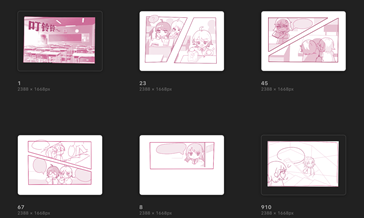
Comic overview
The dialogue and options section runs through the entire design, and the general operation is the same as that of general text adventure games. What is particularly special is that the text has html language interspersed, so size&color can be changed in certain places to give players hints or mislead them, and your choice can affect the subsequent game mechanics. Let’s first show the dialogue and text in the picture above.

Text display(interaction between sucker deskmates)
To adapt to the theme of graffiti on paper, the character special effects in the 2D section are all hand drawn graffiti style, and the color tone is mainly black, white, and gray. The three different characters chosen by the players have also been clearly distinguished: the square has mediocre health and movement speed, and the skill group has a firepower suppressed bow and arrow and a built-in tracking magic crystal bullet, making it an official wheelchair character; The triangle movement speed is specialized, giving a sword dance with a sacrificial range that can be attacked and defended, and a lase, powerful but with attack point/backswing, making it the most maneuverable character with the highest upper limit; Hexagonal health specialization, providing a beam that trades attack power for suppression power and a temporary shield that can enhance resilience. In the first act after the end of the guide, the player will battle a randomly selected character, and after winning, they can jump to the next scene.
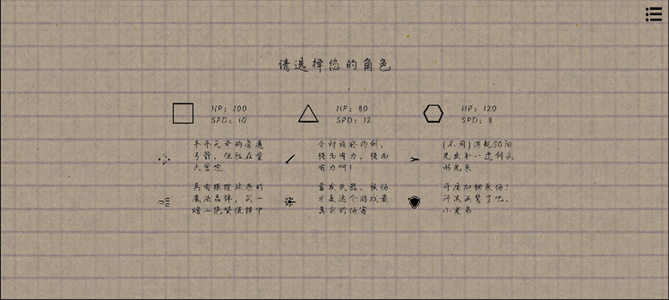
Hand drawn character design
The second scene is boss battle. The first column in the picture shows enemy bosses and monsters, and the second column shows the spells that the boss may release. BOSS is divided into three traditional stages of green, yellow, and red health. The behavior of each stage, the type and quantity of monsters summoned, and the type and quantity of spells released will all vary. Among them, the size, health, movement speed, and resilience of the small monsters are different from each other, and they also have inherent skills such as sprinting. Spells also have directional tracking characters, splitting and then dispersing, rotating and blocking movements, and other characteristics. Overall, the rich combination of monsters and skills makes the entire mini game have certain requirements for player strategy and reaction. However, in order for players to experience the entire process, the difficulty has been slightly controlled. For example, the number of monsters has been limited, and the boss cannot continuously release hurricanes. Based on this design, players can basically pass after they try for severval times.
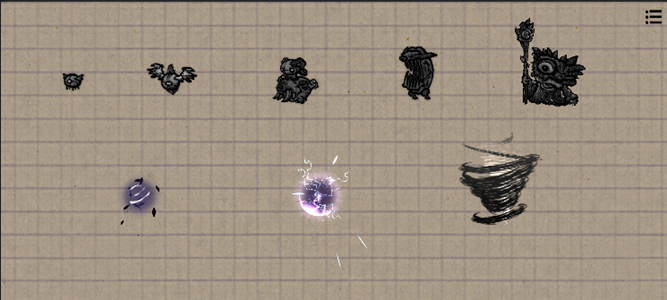
Hand drawn character design
The 3D part is mainly divided into two scenes: day and night. As the story background is set as a fantasy part, the actual production is also very self indulgent, trying many realistic or stylized renderings, after all, there is everything in the dream. In order to facilitate the player’s need for a comprehensive overview/detailed positioning, the camera has been designed to switch between overview and follow perspectives. The attacks of characters can be divided into four categories: general, sweeping, tracking, and floating. Each category has different special effects and mechanisms that players need to explore on their own.
The daytime part utilizes the mechanism of day night rotation, which can quickly simulate environmental changes such as light, shadow, clouds, etc. during the day in about a minute. In order to highlight the floating island style and enhance the dynamic effect, a highly disturbed fog simulation of a floating sea of clouds was also added, a water flow waterfall with a Fresnel term as a reflection and refraction trip was used, and a mining car with special mechanism.
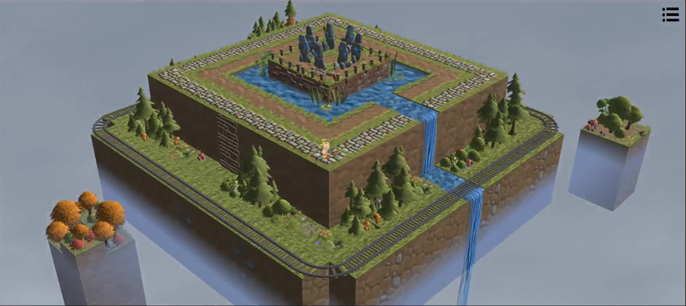
Daytime overview perspective
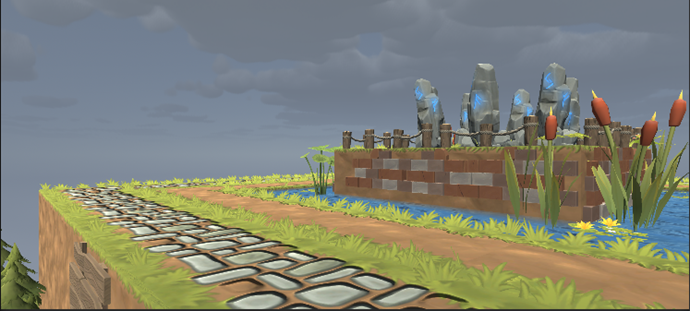
Daytime follow perspective
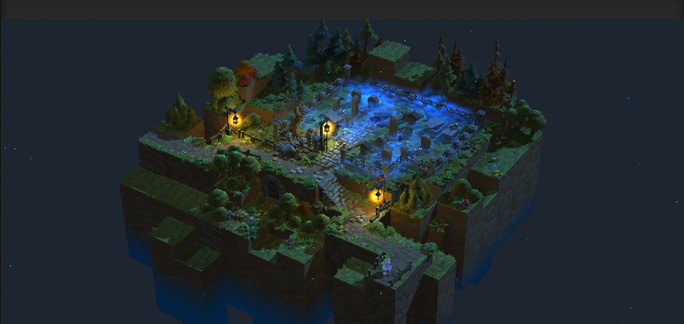
Night overview perspective
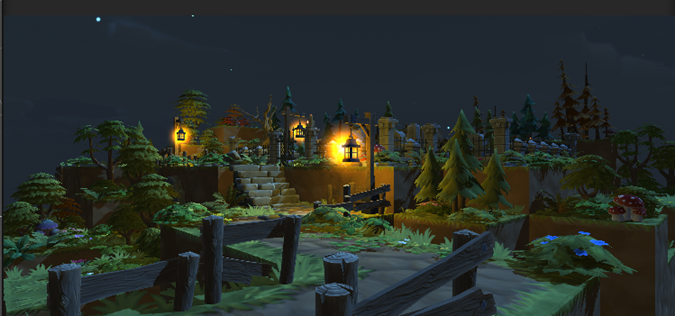
Night follow perspective
Only when you truly want to do something, will you discover various problems. Personal creativity, abilities, partners/team… After resigning, I struggled with various internal conflicts, structures, and brainstorming for four to five months and finally completed the project. I also worked as a planner, programmer, art, music, testing… Play game by heart, make game by life
I greatly admire Zhou Dong, the author of Moncage and the founder of Optillusion Studio. He not only managed to study game design professionally but he also had the luxury to not rush into choosing a conventional career path for livelihood after graduation. Such opportunities and achievements are a distant dream for many, so my plan might also be slightly different: I intend to join a professional animation or gaming company, accumulating experience and capital, before taking steps towards establishing my own independent game studio. I aspire to show somthing different to people. While it might seem a bit unrealistic, I hold onto that hope. Just like the wish sent from the developer of ‘Honkai Impact 3rd’: “Percept as you travel; Try your very best; Not fear the unknown; Not regret your choice.”



